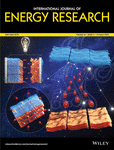Concentration-dependent excess Cu doping behavior and influence on thermoelectric properties in Bi2Te3
Yong Hwan Kim, Yurian Kim, and Hyun-Sik Kim contributed equally to this work.
Summary
Excess Cu has been reported as an effective way to enhance the thermoelectric performance of n-type Bi2Te3-based alloys as well as to secure the reproducibility of their electronic properties. However, the effect of Cu doping into Bi2Te3 lattice is also known to be complex since Cu can occupy either interlayer or cation/anion sites, depending on conditions. Herein, Cu doping behavior in a binary Bi2Te3 prepared by a conventional melt-solidification process was demonstrated, and corresponding changes in electronic and thermal transport properties were investigated. We found that the mechanism behind electronic transport properties improvements was different depending on Cu doping behavior: (a) power factor enhancement (especially at elevated temperatures) at low Cu concentrations (x ≤ 0.008 in CuxBi2Te3) is mainly due to interlayer intercalation of Cu, which optimizes electron concentration and increases the effective mass and (b) power factor enhancement at higher Cu concentrations (0.012 ≤ x ≤ 0.02 in CuxBi2Te3) is due to the substituted Cu at Bi-site, which increases the weighted mobility ratio, as well as intercalated Cu. Enhanced room temperature zT ~ 0.68 and average zT ~ 0.53 were obtained in Cu0.02Bi2Te3 due to synergetic effect of intensified point defect (intercalated and substituted Cu) phonon scattering.




